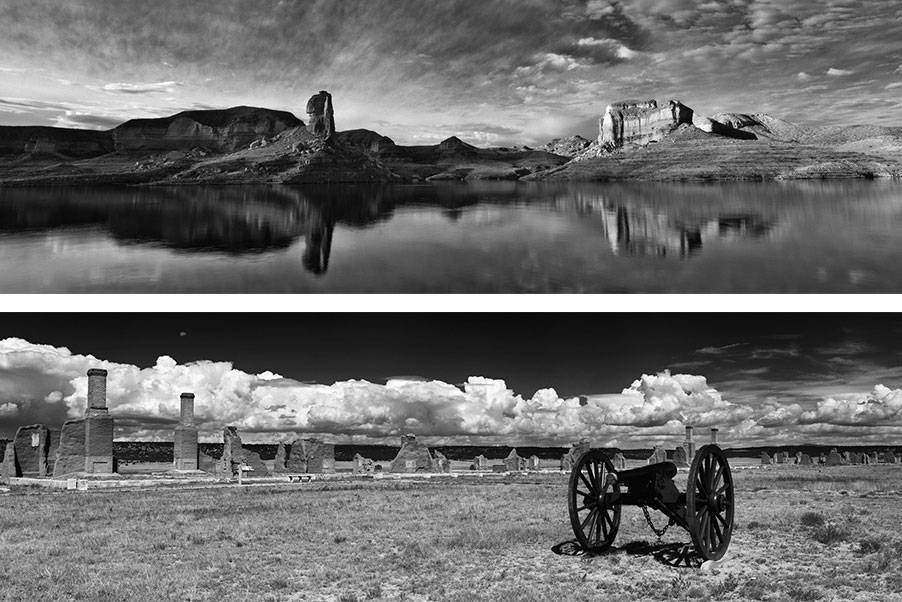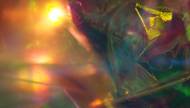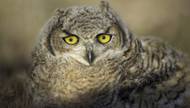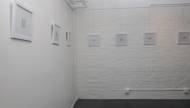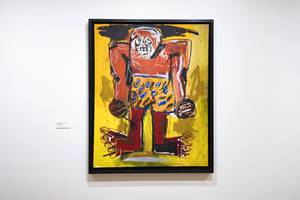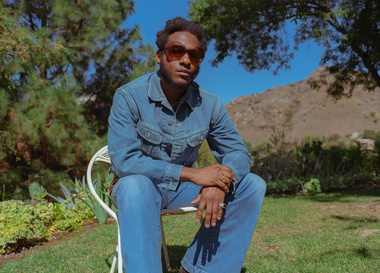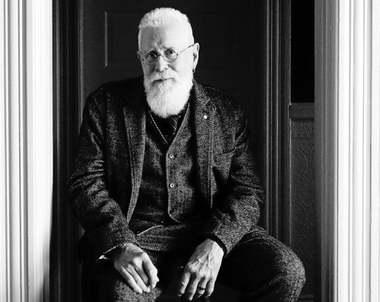The landscapes are otherworldly: vast sand dunes; gnarled, ancient trees; stately ruins. And they’re all domed by dark, steely skies with white wispy clouds.
This is the work of photographer Cody Brothers, who shot six national parks for his latest project, Forgotten Horizons. Created to mark the National Park Service’s 100th anniversary—and with a grant from the National Endowment for the Arts—Brothers’ exhibit captures the majesty of Nevada, New Mexico and Death Valley, California.
It’s a unique challenge to re-create the grand-scale beauty of the Desert Southwest. Every hiker tries to do it with a phone camera … only to be disappointed by the results. Brothers goes a different route. To shoot a big view, he uses big cameras. Some even have bellows and the little black cloth that goes over the shooter’s head.
Brothers also eschews digital for film. His infrared film is the source of that peculiar black-sky effect. “It’s the complete opposite of what’s going on with photography today,” Brothers says. “Most photographers can shoot thousands of shots per day, because it’s all on a card. I have to be choosy because I can only carry so much film.”
Brothers shoots in black and white, looking to emulate the styles of late, great photographers Edward Weston and Ansel Adams. “True black-and-white film can’t be touched as far as tonality and look,” Brothers says. Indeed, the images in Forgotten Horizons carry a sense of timeless gravitas. “The Temple,” for example, is a 20-by-60-inch panorama of a large rock formation at Lake Mead National Recreation Area. It resembles an imposing castle-fort surrounded by a moat, like something from Game of Thrones. It’s almost shocking to remember that this wild structure is in our backyard. Ditto for his large-format photos of Death Valley National Park. The panoramic image “Cottonball Marsh/Springs/Salt Flats” is all sky and reflection. Under his lens, the desert seems ethereal.
Brothers was born and raised in New Mexico, where he lives to this day. Childhood family trips—including one to Chaco Culture National Historical Park, a location featured in this show—fostered his love of natural landscapes. He originally set out to be a painter, taking landscape photos for mere reference. When his photography skills outshone his painting skills, he made the switch.
But Brothers kept his painting influences, like surrealist Salvador Dali. Indeed many of Brothers’ photos look like Dali paintings made real, such as the 28-by-84-inch “The Grandstand at Racetrack Valley.” A bulbous rock structure under a black sky melts into the cracked desert. It’s so weird, but it’s beautiful and true. And it’s ours; as Americans we all own these gorgeous, Martian-like landscapes. In Forgotten Horizons, Brothers succeeds in helping us remember.
Forgotten Horizons Through June 23; daily, 9 a.m.-5 p.m.; included with Springs Preserve admission ($5-$19). Big Springs Gallery, 702-822-7700.
